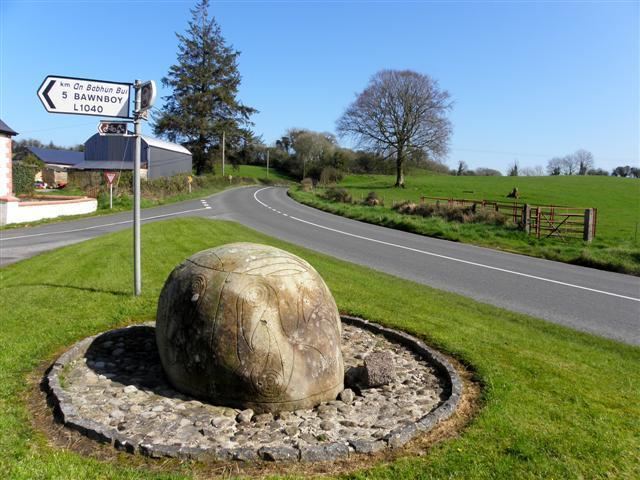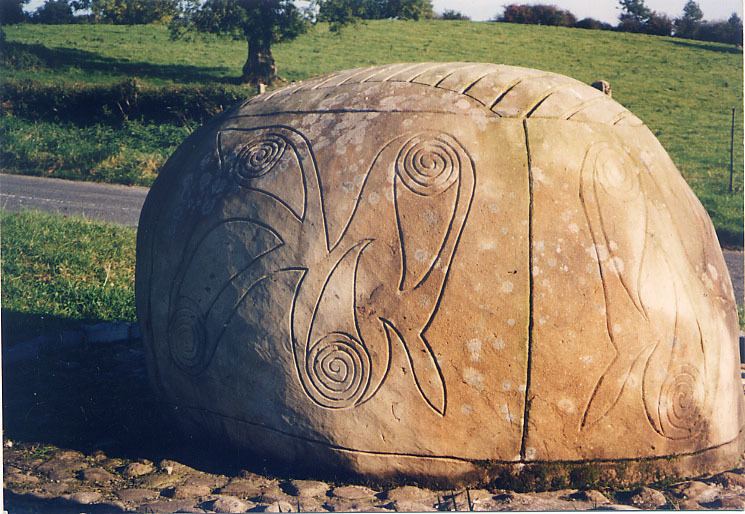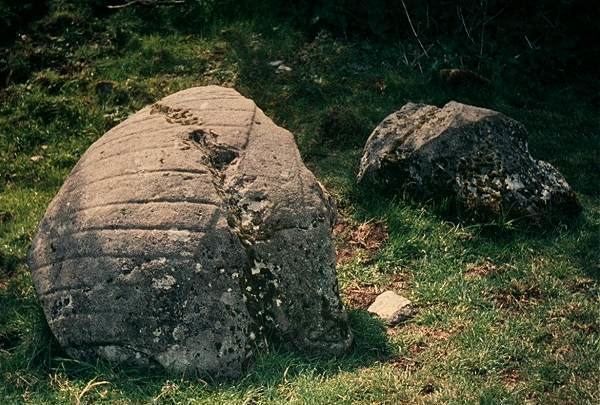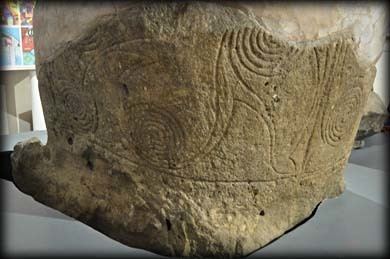 | ||
The Killycluggin Stone is a decorated stone, which has been interpreted by some as the cult image of Crom Cruach. It was found at Killycluggin, County Cavan, in 1921 (Site number 93, Killycluggin townland, “Archaeological Inventory of County Cavan”, Patrick O’Donovan, 1995, p. 19). O'Kelly, however, refers to this image as Crom Dubh. Roughly cone-shaped and covered in Iron Age La Tène designs [2], it was discovered broken in several pieces and partly buried close to a Bronze Age stone circle, inside which it probably once stood. The site has several associations with St. Patrick. Nearby is Tobar Padraig (St. Patrick's Well), and Kilnavert Church, which is said to have been founded by the saint. Kilnavert was originally called Fossa Slécht or Rath Slécht, from which the wider Magh Slécht area was named.

Although now much damaged, the stone can be reconstructed from the different surviving pieces. It was at least 6 foot high. At the base of the stone there were four rectangular adjoining panels measuring 90 cm each in width giving a circumference of 3m 60 cm when it was first carved. The height of each panel was about 75 cm. When excavated and placed upright on its flat base, it was found to lean obliquely to the left from the vertical, perhaps explaining the name Crom, "bent, crooked". The Killycluggin Stone, as it is known, is now in the Cavan County Museum, while a rough replica stands near the road about 300 metres from the original site.

The 14th century Book of McGovern, written in Magh Slécht, contains a poem which states that Crom was situated at Kilnavert beside the road and that the local women used to tremble in fear as they passed by. There is still a local tradition in the area that the Killycluggin stone is the Crom stone.

The top of the stone [3] has a Hair-motif which is found on other La Tène sculptures, such as this head from Mšecké Žehrovice, Czech Republic. The implication is that the Killycluggin stone was an anthropomorphic figure with a human face, which was the part that was smashed to pieces. Support for this is given by-

- Françoise Henry in her book Irish Art in the Early Christian Period, p. 11 wherein she states- the ornaments engraved on the stone of Killycluggin sides seems to be the edge of a garment.
- The Quarta Vita of Saint Patrick written c.800 A.D. states- But the demon, who was in the idol, fearing St. Patrick, turned the stone towards its right side, and the mark of the staff still remains in its left side. A cone-shaped stone would not have a left or right side unless it had a human face.
- The Vita tripartita Sancti Patricii written c. 1100 A.D. states- But the idol leaned over towards the sunset on its right side, for it is southwards its face was, i.e. to Tara. And the mark of Patric's staff still remains in its left side. Again this reference to a face.
- The Metrical Dindsenchas written c.1160 A.D. states- Patrick of Armagh plied a sledge-hammer on Crom from his head to his foot: he removed with rough soldier-deed the weak image that was here.
- By the human figure incised on the Killinagh Crom Cruaich stone


